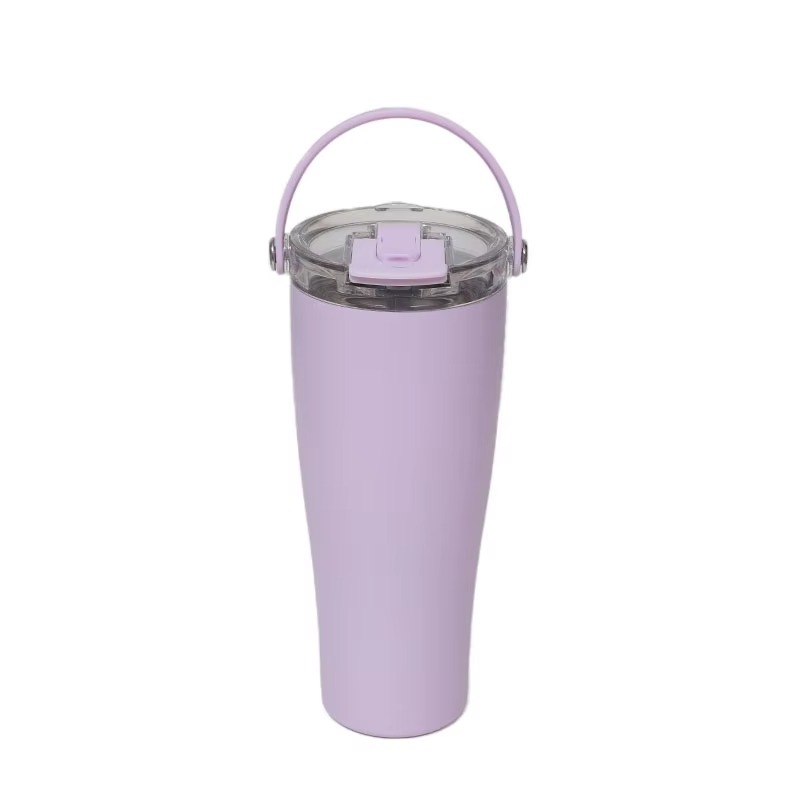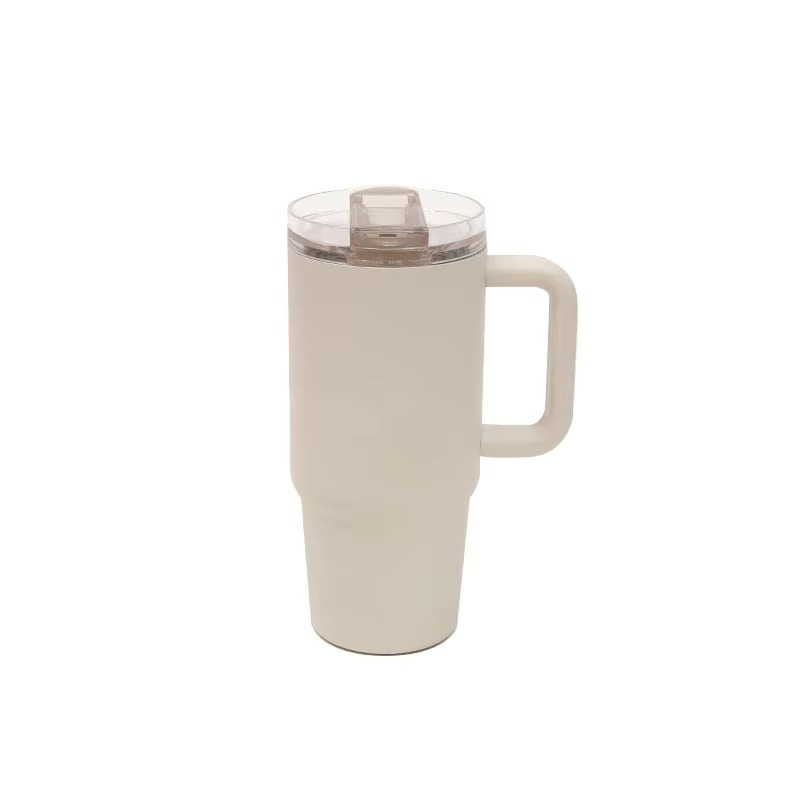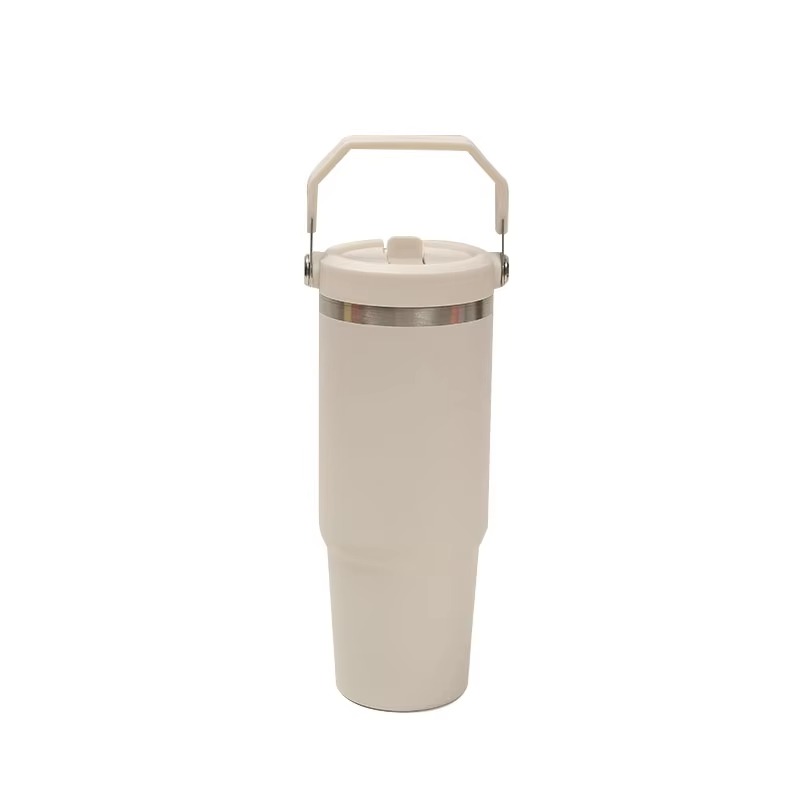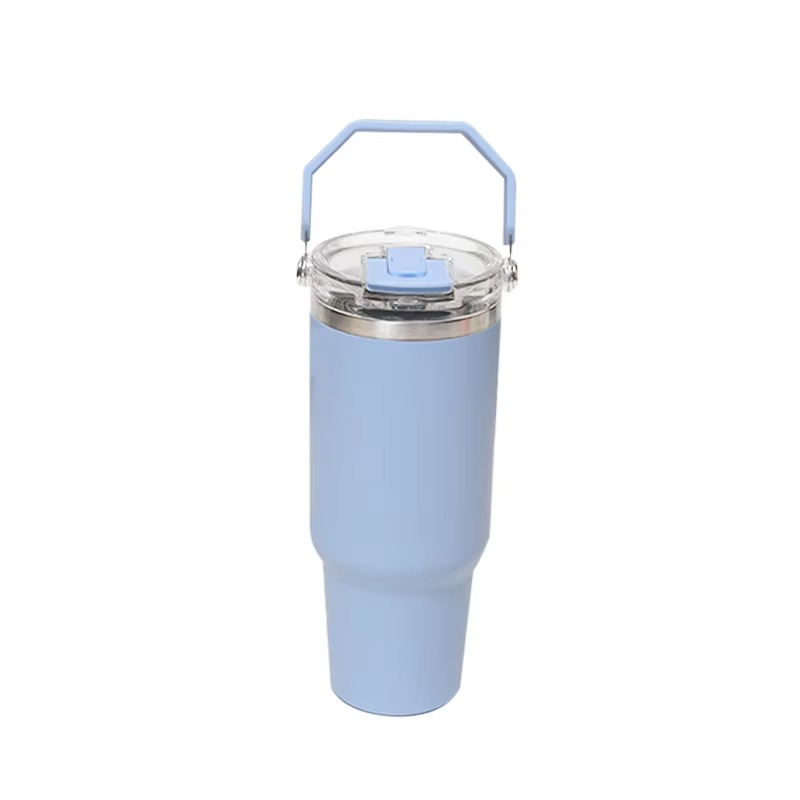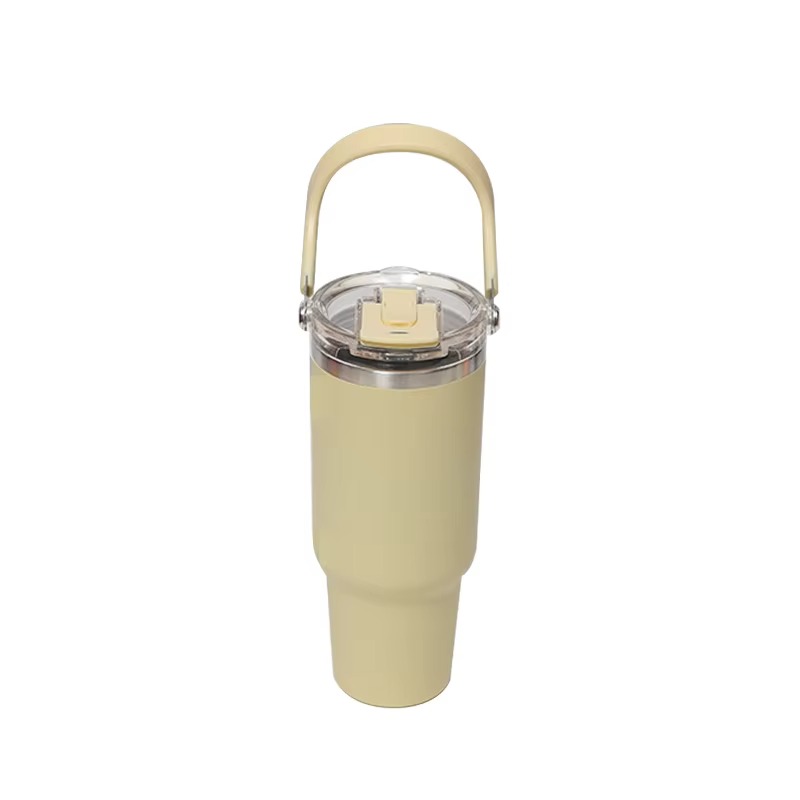Definition and General Characteristics
A plastic tumbler is a type of drinkware characterized by its straight sides, cylindrical form, and the absence of a handle. Unlike mugs, which are typically shorter and include a grip, tumblers are designed to be easily held in one hand, often featuring a smooth or slightly textured surface to prevent slipping. The typical plastic tumbler is lightweight, shatter-resistant, and designed for repeated use in both domestic and professional settings. It serves as an essential everyday object, used for water, juices, soft drinks, and various cold beverages in households, offices, and public venues.
The defining characteristics of a plastic tumbler stem from the properties of the material itself. Plastics allow for high versatility in form and color, offering a wide range of transparent, translucent, and opaque designs. Depending on the intended application, the tumbler may be single-layered or double-layered, sometimes incorporating insulation or decorative inserts. The absence of a handle makes it compact and easy to stack, while the uniform wall thickness provides strength and stability.
In manufacturing terms, a tumbler is often described by its geometry, capacity, and material composition. The geometry includes the base diameter, height, wall thickness, and taper ratio, which affect both aesthetic and functional qualities. The material composition determines mechanical properties such as impact resistance, temperature tolerance, and chemical stability. Common materials used in production include polypropylene (PP), polycarbonate (PC), acrylonitrile-butadiene-styrene (ABS), and copolyesters such as Tritan™, which is known for its clarity and resistance to breakage.
From a design perspective, plastic tumblers fulfill a dual purpose: they are utilitarian—serving the basic function of holding beverages safely—and expressive, reflecting aesthetic preferences through shape, texture, and color. In the past, the dominance of glass in tableware limited design variation; however, the introduction of durable plastics enabled creative freedom for designers and engineers. This innovation allowed for a combination of form and function not possible with traditional materials.
Today, plastic tumblers represent a balance between practicality and design evolution. Their role extends beyond simple drink containers—they have become objects of material study, ergonomic design, and environmental discussion. The growing attention to reusability and recyclability has further positioned the plastic tumbler as an important case in understanding how industrial products can adapt to sustainability demands while maintaining efficiency and affordability.
Scope of Manufacturing and Industrial Context
The manufacture of plastic tumblers represents a specialized field within the larger plastic drinkware industry. A Plastic Tumbler Manufacturer is a facility or company engaged in the design, production, and quality assurance of molded plastic drinkware. Such manufacturers operate within a framework that integrates material science, mechanical engineering, and process control.
One such example is Yongkang Xiaoyu Industry & Trade Co., Ltd., a professional Plastic Tumbler Factory based in Yongkang City, Zhejiang Province, China. Through its official website automugfactory.com, the factory showcases its capabilities in the production of tumblers and related drinkware. While individual manufacturers may differ in scale, most follow similar core processes—ranging from raw material preparation, molding, finishing, and quality inspection, to packaging and shipment.
The role of a Plastic Tumbler Supplier goes beyond mere production. Suppliers act as intermediaries in the global supply chain, ensuring that products meet regional safety standards, environmental regulations, and quality expectations. Their operations involve coordination between material vendors, mold designers, and logistics partners. For example, a factory may source polycarbonate or Tritan resin from certified polymer producers, work with precision mold fabricators to ensure dimensional accuracy, and manage international logistics for distribution to multiple markets.
The Plastic Tumbler Factory typically consists of several integrated sections:
- Material preparation area – where resins are dried, mixed with colorants or stabilizers, and stored in feeding hoppers.
- Injection or blow molding workshops – housing high-precision molding machines that shape the plastic into tumbler forms.
- Post-processing and assembly lines – where printing, lid attachment, or surface finishing is conducted.
- Quality control laboratories – performing impact resistance, temperature, and migration testing to ensure compliance with international standards such as FDA, LFGB, and EU Regulation 10/2011.
- Packaging and warehousing departments – preparing products for domestic or export markets under safe, clean conditions.
Within this ecosystem, automation plays an increasingly central role. Modern Plastic Tumbler Manufacturers use robotic arms for demolding, inspection, and packaging. This reduces the risk of contamination and human error while improving productivity. Automated systems monitor parameters such as injection pressure, mold temperature, and cooling time to maintain consistent product quality.
In addition to automation, digitalization has become a key factor. Many factories have adopted Computer-Aided Design (CAD) and Computer-Aided Manufacturing (CAM) systems, allowing engineers to simulate mold flow and predict potential defects before physical tooling. This integration of virtual and physical production supports higher precision and faster turnaround times.
Manufacturers like Yongkang Xiaoyu operate in regions with strong industrial ecosystems. Zhejiang Province, for instance, hosts a concentration of mold-making workshops, plastic resin distributors, and logistics hubs, creating an efficient industrial cluster. This clustering reduces lead times and enhances flexibility in production. Such regions often serve as international centers for Plastic Tumbler Suppliers, exporting goods to markets across Asia, Europe, and North America.
While the production of plastic tumblers may seem straightforward, it requires careful coordination between material science, process control, and regulatory compliance. The complexity lies in balancing aesthetics with performance and cost efficiency. Each tumbler must maintain optical clarity, mechanical integrity, and safety standards, all while being manufacturable at scale.
Purpose and Structure of This Document
The objective of this document is to present an in-depth examination of the plastic tumbler manufacturing industry—its materials, design principles, production methods, and broader implications in modern manufacturing and environmental sustainability. Rather than emphasizing commercial promotion, this study aims to provide a technical and contextual understanding of how tumblers are designed, produced, and integrated into global supply systems.
In analyzing the manufacturing process, this document will outline several interconnected dimensions:
- Material Science and Selection – A discussion of polymers used in tumbler production, their mechanical and thermal properties, and their suitability for food-contact applications.
- Design and Ergonomics – Exploration of how shape, size, and wall thickness influence usability and durability, supported by principles of product design and engineering.
- Manufacturing Technology – A detailed look at molding processes such as injection molding and blow molding, including the sequence from raw material feeding to final inspection.
- Quality Assurance and Testing – Explanation of how a Plastic Tumbler Factory ensures consistent product performance through standardized testing and process validation.
- Environmental Considerations – Discussion of sustainability issues, including recyclability, energy use, and waste management in the tumbler manufacturing process.
- Regulatory and Safety Standards – Overview of global frameworks governing plastic drinkware, such as food-contact material regulations in the U.S., EU, and China.
- Supply Chain and Industrial Organization – Description of the interconnected network of raw material suppliers, factories, and distributors that make up the global tumbler production system.
- Technological Innovations and Industry Trends – Analysis of new developments such as bio-based plastics, automation, digital manufacturing, and the shift toward circular economy practices.
Each section will explore its subject in factual and descriptive terms, illustrating how manufacturers like Yongkang Xiaoyu contribute to the broader industrial and environmental landscape. The study aims to serve as a comprehensive technical reference, useful for students, researchers, and professionals interested in plastic manufacturing, product design, or industrial engineering.
The tone of the following sections is analytical and descriptive, intentionally avoiding promotional or commercial expressions. This approach enables a clear understanding of the underlying technologies, industrial challenges, and design philosophies that define the work of a modern Plastic Tumbler Manufacturer.
Through this lens, the plastic tumbler becomes more than a consumer product—it becomes a case study in the evolution of industrial materials, the precision of modern manufacturing, and the environmental responsibilities embedded within global production systems.
The Broader Context of Plastic Tumbler Production
The global production of plastic tumblers operates within an increasingly complex framework shaped by technological advancement, environmental regulation, and consumer behavior. While the basic process of molding plastic into drinkware has remained largely consistent, the economic, environmental, and technical expectations surrounding it have changed dramatically.
Plastic Tumbler Suppliers are now required to balance multiple objectives: ensuring cost-efficient production, meeting strict food-safety and quality standards, and reducing environmental impact. This balance is achieved through continuous improvement in material formulation, machinery optimization, and waste minimization practices. The result is an evolving industrial field that combines traditional manufacturing knowledge with cutting-edge technologies.
Factories such as Yongkang Xiaoyu exemplify this transition. Operating as both a Plastic Tumbler Factory and a research-driven manufacturer, it must integrate quality systems, product innovation, and compliance measures into a single operational model. In this respect, the company represents a microcosm of the wider manufacturing environment in East Asia, where industrial specialization and cluster development have supported decades of export-oriented growth.
Beyond production efficiency, another defining characteristic of the modern tumbler industry is adaptability. The capacity to modify design and production lines quickly—responding to different sizes, patterns, or regional standards—is a competitive necessity. For example, European customers may demand BPA-free materials and eco-friendly packaging, while North American buyers emphasize dishwasher durability and aesthetic finish. This adaptability requires factories to maintain flexible tooling systems and trained technical staff capable of reconfiguring machines and molds efficiently.
Furthermore, advancements in smart manufacturing are reshaping how Plastic Tumbler Manufacturers monitor and control production. Sensors and data analytics now allow real-time feedback on parameters such as temperature, pressure, and cycle time. These data streams feed into manufacturing execution systems (MES), which can automatically adjust operations to reduce defects or energy consumption. Over time, such digital infrastructure supports not only efficiency but also traceability—an increasingly important requirement in food-contact manufacturing.
In the broader context of material science, researchers continue to explore new polymers that enhance the sustainability and performance of tumblers. Bio-based plastics, recycled content resins, and hybrid materials are being tested for their feasibility in mass production. These innovations aim to maintain clarity, toughness, and safety while reducing dependence on petroleum-based feedstocks.
At the same time, public perception and policy pressures are influencing how Plastic Tumbler Suppliers operate. Governments worldwide are tightening restrictions on single-use plastics, encouraging a shift toward reusable alternatives. Plastic tumblers, when designed for long-term use, offer a viable response to this shift—combining reusability with manufacturing efficiency. Yet, this also imposes new expectations: the durability of reusable tumblers must match or exceed that of comparable glass or metal options, requiring precise control over molding and material formulation.
The manufacturing process itself embodies a convergence of precision engineering and industrial scale. Injection molding machines exert clamping forces of several hundred tons, injecting molten polymer into steel molds with millisecond precision. Cooling channels within the molds determine not only production speed but also surface quality and transparency. A deviation of just a few degrees in temperature or a fraction of a second in cooling time can result in visible defects or warping. Consequently, Plastic Tumbler Factories employ skilled technicians who monitor and adjust these parameters continuously.
This precision is mirrored in tooling development, where molds are designed using CAD/CAM systems and produced from hardened steel. The mold is a critical investment: its accuracy determines the repeatability of every unit produced. Once the mold is operational, it may yield hundreds of thousands of tumblers before maintenance is required.
The combination of advanced machinery, trained personnel, and systematic quality control underlines the professionalism inherent to this manufacturing sector. Unlike artisanal or manual processes, plastic tumbler production depends on standardization and reproducibility. Every product must conform to dimensional tolerances, safety regulations, and visual criteria, regardless of batch size or destination market.
Industrial and Environmental Relevance
Plastic tumbler production exemplifies many of the challenges and opportunities faced by the modern plastics industry. On one hand, it relies on petroleum-derived materials and energy-intensive processes; on the other, it offers a pathway toward reusability, recyclability, and efficient material use. The tension between these aspects defines much of the research and policy discourse surrounding plastic manufacturing today.
Factories are therefore adapting by implementing closed-loop recycling systems, capturing waste from trimming and defective pieces to re-grind and reprocess within allowable quality limits. Similarly, improvements in machine energy efficiency and the use of renewable energy sources are gradually reducing the overall carbon footprint of production.
For Plastic Tumbler Manufacturers, sustainability is no longer an optional feature but an operational necessity. International buyers and regulatory agencies demand transparency in material sourcing and production impact. Environmental management systems such as ISO 14001 provide frameworks for measuring and improving ecological performance.
Moreover, the emphasis on life-cycle assessment (LCA) has prompted many Plastic Tumbler Suppliers to evaluate their products from raw material extraction to end-of-life disposal. This holistic perspective encourages innovation not only in production but also in design, as products are optimized for recyclability and reduced material consumption.
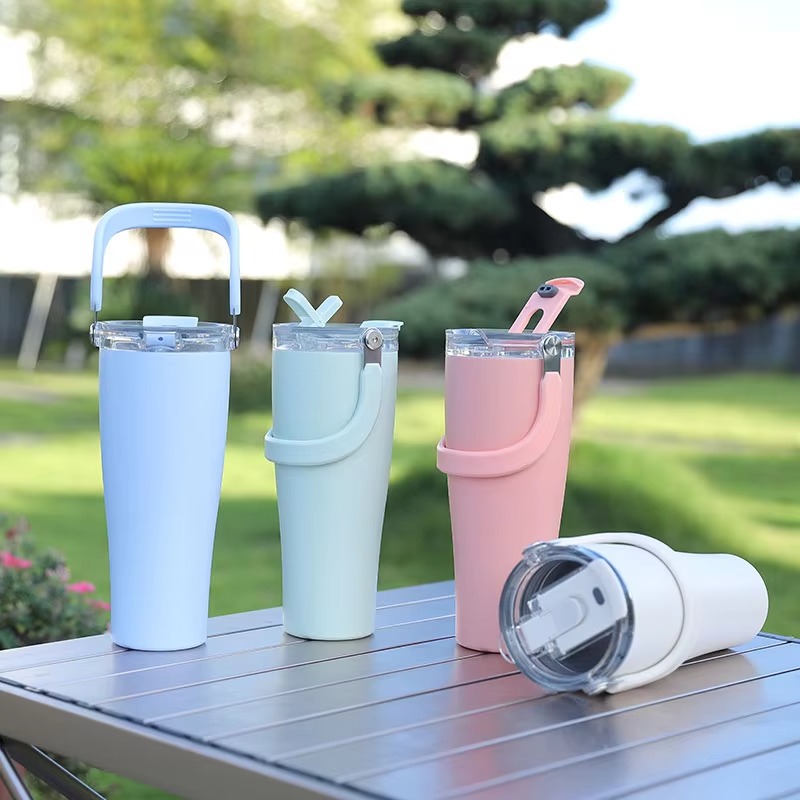
Looking Ahead
The following sections of this study will explore each component of the plastic tumbler manufacturing process in depth—from polymer selection and design engineering to molding, inspection, and sustainability practices. By focusing on the technical and systemic aspects, the discussion will provide a clear picture of how a Plastic Tumbler Factory functions as part of a complex industrial ecosystem.
Understanding this foundation is essential before moving into advanced topics such as process innovation, automation, and environmental optimization. Through this analytical approach, the document aims to illustrate how the plastic tumbler—an object of simple appearance—represents a sophisticated convergence of material technology, industrial precision, and global collaboration.
Why Choose Yongkang Xiaoyu’s Plastic Tumblers
In the context of modern drinkware manufacturing, the selection of a reliable Plastic Tumbler Manufacturer involves more than appearance or cost. It concerns technical competence, process integrity, and a commitment to consistent standards. Yongkang Xiaoyu Industry & Trade Co., Ltd., known through its website automugfactory.com, represents a typical example of a manufacturer that integrates material science, controlled production methods, and a clear understanding of global consumer and regulatory expectations.
1. Integrated Production Capabilities
Unlike many small-scale workshops that depend on outsourced components, Yongkang Xiaoyu operates as a Plastic Tumbler Factory with in-house processing lines covering the entire workflow—from injection molding and surface treatment to final assembly and packaging.
This vertical integration ensures:
- uniform dimensional tolerance across production batches,
- reduced dependence on third-party mold fabricators, and
- streamlined traceability of raw materials and product quality.
Such integration contributes to production stability and reduces variation, which is essential in large-volume supply contracts where reproducibility is a core requirement.
2. Material Control and Safety Assurance
In the drinkware industry, polymer composition defines not only durability but also compliance with safety and food-contact standards. Xiaoyu emphasizes polymers such as polypropylene (PP), Tritan copolyester, and other BPA-free materials that meet FDA and LFGB guidelines.
The company’s approach reflects an understanding of:
- regulatory frameworks in Europe and North America,
- the shift away from bisphenol-based plastics, and
- the need for consistent batch testing to verify chemical migration safety.
This disciplined material selection distinguishes the company from Plastic Tumbler Suppliers that prioritize cost optimization over compositional control. In practical terms, it results in products that maintain clarity, stability, and inertness through repeated use and washing cycles.
3. Engineering Precision and Mold Development
The mold is the fundamental determinant of product geometry and visual uniformity. Xiaoyu’s factory maintains its own tooling department equipped with CNC machining and digital measuring systems.
This capability allows:
- iterative modification of mold cavities for structural optimization,
- rapid adjustment to customized orders, and
- precise calibration to minimize flashing and deformation during injection cycles.
In comparison, manufacturers relying solely on external mold vendors often face delays in design iteration and limited control over micro-tolerances. The capacity to develop and maintain proprietary tooling internally grants Xiaoyu a structural advantage in both customization and consistency.
4. Process Automation and Quality Monitoring
Contemporary Plastic Tumbler Manufacturers are transitioning from manual operation to automated systems. Xiaoyu’s manufacturing lines incorporate automatic feeding, temperature-regulated molding, and sensor-based inspection.
Such automation supports:
- reduced material waste,
- stable thermal processing profiles,
- improved reproducibility between batches, and
- continuous statistical process control (SPC).
In addition, random sampling and mechanical stress testing ensure that each production cycle adheres to internal standards on impact resistance, wall thickness, and color uniformity. The use of automation not only enhances efficiency but also minimizes human error—a defining factor for consistent industrial-grade output.
5. Design Adaptability and Functional Development
Although tumblers may appear simple in shape, their engineering involves complex thermal, ergonomic, and visual considerations. Yongkang Xiaoyu’s team integrates CAD-based modeling and finite element simulation to optimize wall structure and base stability.
This enables the production of variations such as:
- single-wall and double-wall insulated tumblers,
- screw-lid or snap-fit closure systems,
- integrated straw designs for portable use, and
- stackable forms for catering or institutional applications.
This combination of design flexibility and engineering discipline positions Xiaoyu as a Plastic Tumbler Supplier capable of meeting distinct functional demands—from domestic use to commercial and outdoor contexts—without deviating from industrial specifications.
6. Environmental and Sustainability Practices
The global discourse on plastics now extends beyond manufacturing efficiency to include lifecycle responsibility. Xiaoyu’s operations reflect this transition through:
- controlled waste management in molding and trimming stages,
- utilization of recyclable polymer feedstocks wherever possible, and
- exploration of bio-based or partially recycled resins for pilot projects.
By integrating environmental considerations into the production routine rather than treating them as external initiatives, the factory aligns its practices with the principles of resource optimization and circular economy awareness.
Such measures are increasingly relevant to procurement standards among institutional buyers seeking verifiable environmental responsibility in their suppliers.
7. Consistency in Large-Scale Supply
A defining feature of a competent Plastic Tumbler Factory lies in its ability to maintain stable quality across extended production runs. Xiaoyu achieves this through standardized batch recording, raw material lot tracing, and digital monitoring of production parameters.
This systemic approach reduces product variation even when output volumes increase, ensuring that every shipment meets identical dimensional and performance benchmarks.
The emphasis on process documentation and repeatability also supports audits and external compliance inspections, a critical aspect in international OEM or private-label partnerships.
8. Compliance and Certification Alignment
Food-contact drinkware is subject to rigorous certification frameworks. Xiaoyu’s operations follow multiple layers of compliance, including:
- conformity with domestic GB standards,
- export-oriented testing for EU and North American regulations, and
- ISO-aligned quality management protocols.
This multi-tiered compliance architecture demonstrates the company’s understanding of global regulatory diversity, enabling clients to distribute products across different jurisdictions without technical barriers.
9. Technological Responsiveness
In a field characterized by rapid technological evolution—such as the adoption of new polymer compounds or automated inspection systems—responsiveness is crucial.
Yongkang Xiaoyu maintains research collaboration with local equipment suppliers and material specialists to test new resin blends, surface finishes, and processing techniques.
Such cooperative experimentation provides early access to practical improvements in:
- temperature-resistant polymers,
- color stability in UV exposure, and
- structural integrity in thinner-walled designs.
Through continuous engagement with technological updates, Xiaoyu ensures that its product range evolves in step with contemporary material science rather than remaining static.
10. Comparative Observations
When compared with other regional Plastic Tumbler Manufacturers, several characteristics stand out:
- Control Depth: Many competitors operate under partially outsourced production chains, while Xiaoyu’s in-house system offers end-to-end control.
- Material Assurance: While generic suppliers may rely on unverified resin blends, Xiaoyu enforces documented source validation.
- Regulatory Literacy: Familiarity with diverse international testing regimes distinguishes Xiaoyu’s approach from purely domestic producers.
- Process Reliability: Consistent automation and process documentation enable predictable output in bulk orders.
These distinctions are not expressions of superiority but reflections of organizational structure, process maturity, and operational transparency.
The Role of Chinese Manufacturers in the Global Plastic Tumbler Supply Chain
1. Introduction
The plastic tumbler, though a seemingly simple household object, represents a convergence of material technology, industrial design, and international logistics. In the global market for consumer drinkware, Chinese manufacturers occupy a central position in the supply chain, bridging mass production with customization, and industrial scale with regulatory conformity. This section examines how China’s manufacturing ecosystem—shaped by decades of industrial development—has become a critical foundation for the worldwide distribution of plastic tumblers and related products.
2. Evolution of China’s Plastic Manufacturing Sector
The rise of China’s plastic manufacturing sector dates back to the late 20th century, when the expansion of petrochemical infrastructure enabled rapid growth in polymer processing. Over time, the combination of low-cost labor, growing technical literacy, and domestic demand led to the establishment of specialized industrial clusters.
Cities such as Yongkang, Taizhou, and Guangzhou evolved into concentrated hubs for small appliances, drinkware, and household plastics. These regions developed not only in terms of quantity but also in technological competence—building supply chains capable of handling polymer sourcing, mold fabrication, precision injection molding, and international logistics under one integrated framework.
Factories like Yongkang Xiaoyu Industry & Trade Co., Ltd., accessible through automugfactory.com, exemplify this development: combining material expertise, automation, and export-oriented compliance awareness within the same operational ecosystem.
3. Structure of the Global Plastic Tumbler Supply Chain
The global supply chain for plastic tumblers can be viewed as a multi-stage system:
- Raw Material Suppliers: Global petrochemical producers provide polymers such as PP, PC, and Tritan. Many of these resins are imported into China from multinational suppliers or synthesized domestically.
- Manufacturing and Molding: Chinese Plastic Tumbler Manufacturers carry out material compounding, injection or blow molding, and assembly.
- Component Integration: Factories may add silicone rings, metal lids, or other accessories sourced locally from supporting industries.
- Quality Control and Packaging: Testing and labeling are conducted to ensure compliance with export markets.
- Global Distribution: Finished tumblers are exported to distributors, retailers, and private-label partners worldwide.
This structure demonstrates China’s ability to consolidate multiple industrial stages within a single national system—an advantage that reduces cost and time inefficiencies in cross-border production networks.
4. Industrial Clustering and Knowledge Transfer
Chinese Plastic Tumbler Factories often benefit from geographic clustering. In industrial zones, tooling manufacturers, raw material suppliers, colorant producers, and packaging services operate in close proximity. This arrangement facilitates rapid knowledge transfer and innovation diffusion.
For instance, a factory developing a new double-wall tumbler can collaborate with nearby mold specialists to modify cavity designs, or with resin suppliers to test new BPA-free copolymers. Such efficiency in communication and iteration shortens product development cycles—a crucial advantage in markets where design trends change rapidly.
Moreover, the clustering effect encourages skill specialization. Workers, engineers, and designers within these regions accumulate cross-functional expertise, allowing the domestic industry to move beyond low-skill manufacturing into semi-automated and precision-controlled production environments.
5. Technological Capabilities and Process Advancement
In the past decade, China’s manufacturing landscape has undergone a visible transformation. Many Plastic Tumbler Suppliers have introduced digital control systems, automated material feeding, and robotic handling to replace manual labor.
Key process advancements include:
- Precision Injection Molding: Modern equipment ensures consistent wall thickness and dimensional accuracy.
- Automated Inspection: Camera-based sensors identify surface defects and color deviations in real time.
- Material Recycling Systems: Closed-loop grinders and feeders reintroduce reprocessed scrap into production.
- Digital Production Management: Centralized monitoring platforms track batch data and energy use.
Manufacturers such as Yongkang Xiaoyu demonstrate how smaller enterprises can apply automation pragmatically—balancing cost efficiency with process reliability, without necessarily relying on full-scale industrial robotics.
6. Quality Assurance and Regulatory Compliance
As the global market demands higher safety standards, Chinese factories have adapted by integrating international compliance protocols into their workflows.
Common frameworks include:
- FDA and LFGB testing for food-contact safety,
- ISO 9001 quality management systems, and
- Material traceability documentation for export transparency.
The transition toward documented compliance reflects a structural change in the Chinese export sector—from cost-driven production to specification-driven partnerships.
Today, many overseas distributors select Chinese Plastic Tumbler Manufacturers precisely because these facilities provide auditable quality data and material certification, ensuring the end products meet regional regulatory requirements.
7. Supply Chain Flexibility and Customization Capacity
One defining feature of China’s drinkware manufacturing base is its flexibility. Factories routinely adapt molds, colors, and surface treatments for clients across different markets—ranging from minimalist European designs to colorful children’s collections for Southeast Asia.
This adaptability is sustained by:
- modular mold systems that allow rapid switching between product variants,
- in-house design and prototyping using CAD/CAM software, and
- cooperative networks with printing, coating, and packaging suppliers.
While large-scale production remains the norm, smaller batch orders are also feasible due to automation in mold preparation and digital order management.
This balance between efficiency and adaptability distinguishes Chinese Plastic Tumbler Factories in a global market increasingly shaped by customization demands.
8. Environmental Transition and Sustainability Challenges
Environmental considerations now influence every stage of the plastic tumbler industry. Chinese manufacturers, historically associated with large-scale production, are gradually incorporating sustainable practices such as:
- use of recyclable or bio-based polymers,
- optimization of energy consumption during molding, and
- improved waste segregation and regrinding processes.
Governmental policies, including the “Made in China 2025” initiative and national plastic reduction plans, encourage factories to pursue cleaner production technologies.
While challenges remain—especially regarding the recycling of multi-material tumblers—the industry’s shift toward sustainability represents a necessary adaptation to global expectations.
9. Economic and Logistical Advantages
From a logistics perspective, China’s infrastructure remains one of its strongest assets. The integration of port networks, containerized freight systems, and customs digitization enables efficient export operations.
Factories located near coastal cities can ship large volumes directly to international ports, minimizing lead times.
Additionally, the density of component suppliers within China reduces dependency on imported subcomponents, stabilizing production even during global disruptions.
This logistical cohesion allows Chinese Plastic Tumbler Suppliers to serve as both manufacturers and consolidators within the global distribution network—handling design, production, and packaging within one localized system.
10. Comparative Landscape and Global Partnerships
Globally, production of plastic tumblers also exists in regions such as Southeast Asia, Eastern Europe, and North America. However, Chinese manufacturers continue to dominate due to a combination of technological maturity, infrastructure, and economies of scale.
In recent years, cooperation between Chinese factories and foreign brands has shifted from transactional sourcing to collaborative development.
Rather than simply producing according to fixed designs, manufacturers like Yongkang Xiaoyu participate in material testing, prototype evaluation, and regulatory planning with international partners.
This evolution indicates a move toward knowledge-based manufacturing—where technical input and process refinement become as valuable as production capacity itself.
11. Challenges and Future Outlook
Despite these strengths, the industry faces multiple challenges:
- rising labor costs and environmental compliance expenses,
- stricter global regulations on single-use plastics,
- increasing consumer preference for recyclable or biodegradable materials, and
- competition from automated factories in other regions.
To address these pressures, Chinese Plastic Tumbler Manufacturers are investing in research on advanced polymers, exploring modular production automation, and improving energy efficiency.
In the near future, sustainable design and lifecycle management are expected to define competitive advantage rather than merely production volume.
The global plastic tumbler supply chain illustrates how manufacturing competence, geographic integration, and regulatory adaptation interact in shaping modern industry.
Chinese manufacturers—supported by their mature industrial clusters, evolving technology, and adaptive production structures—occupy a pivotal role in connecting raw materials, design innovation, and global distribution.
Factories such as Yongkang Xiaoyu Industry & Trade Co., Ltd. demonstrate how this role continues to evolve: from large-scale production toward a model emphasizing process intelligence, sustainability, and cross-border collaboration.
As global demand for reusable and safety-compliant drinkware continues to grow, the contribution of China’s plastic tumbler manufacturing base will remain integral to the stability and innovation of the worldwide supply network.

 English
English Español
Español русский
русский
